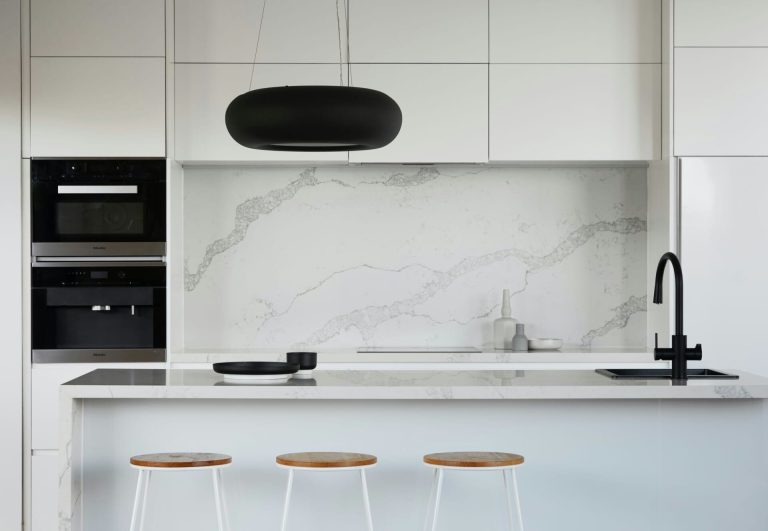Building a home is a journey that transcends mere bricks and mortar; it’s a transformative experience that intertwines dreams, visions, and meticulous planning. The home building process is akin to an artist’s canvas, where each stroke of design, each choice of material, and every consideration of space combines to create a living masterpiece. From the initial spark of inspiration to the final unveiling, this intricate journey weaves together the aspirations of homeowners with the expertise of architects, builders, and craftsmen.
In this article, we will take you through the multifaceted stages of home construction, peeling back the layers of complexity to reveal the essential steps involved—from drafting detailed plans that capture your vision, to navigating legal regulations and securing the necessary permits, and executing the build with precision and care. Whether you are a first-time homebuilder or someone looking to deepen their understanding of the construction process, this comprehensive guide will illuminate the path from conceptualization to realization, demystifying the stages that turn architectural dreams into tangible, welcoming spaces. Join us as we explore the intricate dance of creativity and craftsmanship that defines the home building experience, laying the groundwork for a future filled with comfort and personalized style.
Understanding the Blueprint: Navigating Design and Planning Phases
The design and planning phases are the backbone of the home building process, ensuring every detail aligns with your dream blueprint. It all starts with a comprehensive understanding of the project’s requirements, including aesthetic preferences, functionality, and budget constraints. Collaborating with architects and designers, you can visualize your ideas through detailed sketches and 3D models, helping to prevent costly changes during construction. This stage allows for critical decisions around layout, materials, and energy efficiency, laying the groundwork for a seamless transition to the next steps.
Throughout this process, it’s crucial to establish clear communication with all stakeholders involved. Regular meetings with your builder, architect, and any other parties can facilitate the exchange of feedback and fresh ideas. Consider using tools like project management software or communication platforms to track progress and share updates efficiently. Key tasks during this phase include:
- Site Analysis: Evaluating the land for environmental concerns and zoning restrictions.
- Budgeting: Finalizing financial plans to align with design choices.
- Permits & Approvals: Securing necessary legal permissions from local authorities.
As the planning phase progresses, a detailed timeline begins to emerge, dictating when specific actions must occur. Utilizing a project timeline table can help visualize these stages, ensuring that milestones are met alongside evolving decisions. Below is an example of a simplified timeline that outlines the key milestones in the design and planning phases:
| Stage | Estimated Duration | Tasks Involved |
|---|---|---|
| Concept Development | 2-4 weeks | Sketches, Initial Budgeting |
| Design Finalization | 4-6 weeks | Blueprint Agreement, Material Selections |
| Permitting Process | 4-8 weeks | Submit Plans, Await Approvals |

Laying the Foundation: Key Steps in Securing Permits and Approvals
Securing the necessary permits and approvals is a crucial step in transforming architectural visions into tangible homes. Before you break ground, it’s essential to gather a comprehensive understanding of local zoning laws and building codes. This includes reviewing the specific requirements for your project’s location, as regulations can vary significantly between neighborhoods and municipalities. Engaging with local building authorities early in the process can provide valuable insights and help streamline the application process. Be prepared to adapt your plans in response to feedback or additional requirements, ensuring compliance with all legal stipulations.
Once you have a grasp on the regulations, the next step involves preparing and submitting your application for permits. This often entails a detailed set of documents, including architectural drawings, site plans, and engineering reports. Consider creating a checklist to keep track of all required documents, which may include:
- Site Plan and Survey
- Building Plans and Elevations
- Structural Calculations
- Energy Compliance Documents
- Environmental Impact Assessments
Each required document should be meticulously prepared to avoid delays and facilitate a smoother approval process. Keep in mind that certain projects may also need reviews from additional committees, such as zoning boards or neighborhood associations, which can further influence timelines.
After submission, monitoring the progress of your application is essential. This may involve attending public meetings or responding to requests for additional information from the approval board. To keep your project on track, consider establishing a communication plan with stakeholders, which might include:
| Stakeholder | Role | Contact Method |
|---|---|---|
| Building Official | Permit Approval | Email & Phone |
| Architect | Design Flexibility | Email & Meetings |
| Neighbors | Community Relations | Community Forums |
Maintaining clear lines of communication will not only enhance collaboration but also mitigate potential issues that may arise during the permitting phase. By laying this foundation effectively, you pave the way for a smoother transition from concept to construction.

Constructing Dreams: Effective Project Management and Communication Strategies
Effective project management and communication are the backbone of transforming architectural blueprints into tangible homes. From the initial design phase to the final touches, each stage requires precise coordination among various stakeholders, such as architects, builders, and homeowners. Establishing a clear timeline helps to set realistic expectations and ensures that each party understands their responsibilities. This not only mitigates potential delays but also fosters a collaborative environment where everyone is aligned towards a common goal.
Communication is key in every stage of building a home. Regularly scheduled meetings should be implemented to provide updates on progress and address any concerns that arise. Utilizing tools such as Gantt charts or project management software can greatly enhance team transparency. These tools allow for tracking of critical tasks while enabling easy access to important documents. Here are a few essential communication strategies:
- Regular Status Updates: Schedule weekly check-ins to discuss progress and challenges.
- Accessible Documentation: Ensure that all plans and permits are easily accessible to everyone involved.
- Feedback Mechanisms: Establish a system for all parties to provide and receive constructive feedback.
Moreover, creating a project workflow table can help visualize the entire process. This clarity allows for adjustments as needed, keeping the project on track. Consider the following example:
| Project Phase | Start Date | End Date | Responsible Party |
|---|---|---|---|
| Design | 01/01/2024 | 02/15/2024 | Architect |
| Permitting | 02/16/2024 | 03/01/2024 | Contractor |
| Construction | 03/02/2024 | 09/30/2024 | Builder |
| Final Inspection | 10/01/2024 | 10/15/2024 | Inspector |
This structured approach is instrumental in ensuring that every phase is accounted for, deadlines are respected, and resources are allocated efficiently. Through deliberate planning and open lines of communication, the dream of homeownership can smoothly transition from concept to reality.

Finishing Touches: Interior Design Choices and Sustainable Practices for Your New Home
As you transition from the raw skeleton of your home to a warm, inviting space, the choice of interior design elements becomes crucial. Start by selecting a color palette that resonates with your personal style while enhancing the natural light and warmth of each room. Consider using eco-friendly paints that are low in volatile organic compounds (VOCs) to improve indoor air quality and minimize environmental impact. Incorporate sustainable materials like reclaimed wood, bamboo flooring, or cork, which not only add character but also promote a healthier planet.
Furniture selection is another integral part of creating your dream home. Opt for pieces that are produced sustainably, such as those made from responsibly sourced wood or recycled materials. Consider supporting local artisans and manufacturers to reduce your carbon footprint and contribute to your community’s economy. When choosing textiles, look for organic fabrics that avoid harmful chemicals, and explore options like hemp, linen, or Tencel that are both stylish and sustainable.
Lighting plays a vital role in both ambiance and environmental efficiency. Select LED fixtures that consume less electricity and last longer than traditional bulbs. Additionally, integrate large windows or skylights to maximize natural light, reducing the need for artificial lighting during the day. To understand the impact of your choices, here’s a simple table comparing the key aspects of sustainable design:
| Aspect | Traditional Choice | Sustainable Choice |
|---|---|---|
| Furniture Material | New hardwood | Reclaimed wood |
| Paint Type | Standard paints | Low-VOC paints |
| Lighting | Incandescent bulbs | LED fixtures |
| Textiles | Synthetic fabrics | Organic cotton or hemp |
Q&A
The Home Building Process: From Plans to Reality – Q&A
Q1: What are the initial steps in the home building process?
A1: The journey begins with a vision! Homeowners typically start by defining their needs and desires, which leads to brainstorming ideas. Next, it’s crucial to develop a budget and gather inspiration through magazines, online platforms, or by visiting model homes. This phase often culminates in hiring an architect or designer to craft the blueprints that transform dreams into structured plans.
Q2: How important is the choice of location in the home building process?
A2: Location is key! The site will dictate not only the home’s design but also its accessibility to essential amenities like schools, shopping centers, and parks. Additionally, factors like soil quality, topography, and environmental regulations must be considered. A well-situated home can increase long-term satisfaction and property value!
Q3: What role does obtaining permits and approvals play?
A3: Permits and approvals are the gatekeepers of your building project. They ensure that your plans are compliant with local codes and zoning laws, protecting both the homeowner and the community. Securing these before breaking ground can prevent costly delays or potential legal issues. It’s like getting a green light before entering a busy intersection!
Q4: What is involved in the actual construction process?
A4: Construction is where plans leap off the page! It begins with site preparation—clearing, grading, and laying the foundation. Then, each phase follows, from framing and roofing to plumbing, electrical work, and insulation. Contractors, tradespeople, and project managers coordinate tasks, ensuring everything adheres to the outlined schedule and budget. Think of it as assembling an intricate puzzle—every piece must fit perfectly to reveal the final masterpiece.
Q5: How can homeowners avoid potential pitfalls during construction?
A5: Open communication is paramount! Regular check-ins with your contractor and project manager can identify concerns early. Additionally, keeping a flexible mindset while sticking to the overall plan can mitigate unexpected challenges. Establishing a well-defined contract that outlines responsibilities and timelines helps ensure everyone is on the same page throughout the process.
Q6: What can homeowners expect during the final stages of building?
A6: As you near completion, the excitement mounts! Final inspections ensure everything meets local safety and quality standards. Afterwards, you’ll see cosmetic touches such as landscaping and interior finishes. It’s important to walk through the home with your builder to verify that everything aligns with your vision before formally taking possession—this is the moment when plans truly become reality!
Q7: What happens after the house is built?
A7: Once your new home is ready, it’s time to move in and make it your own! Personalized decor, furniture placement, and a housewarming celebration can transform bare walls into a living, breathing space. Remember, the journey doesn’t end here; regular maintenance and occasional renovations can keep your home vibrant and welcoming for years to come!
Q8: Any final tips for future homeowners embarking on this journey?
A8: Embrace the adventure! Building a home is a significant undertaking but also an incredibly rewarding experience. Stay organized, be proactive, and keep a positive mindset. Surround yourself with a reliable team of professionals who share your vision, and remember to enjoy every step of this transformative journey from blueprints to bricks and mortar!
To Wrap It Up
As we bid farewell to the journey through the home building process, from the initial sketches of dreams to the solid reality of brick and timber, we recognize that each project is a unique narrative of ambition, collaboration, and craftsmanship. This transformative adventure – punctuated by planning meetings, site visits, and the inevitable challenges – is a testament to the vision we hold for our future spaces.
Building a home is more than just construction; it’s about creating a sanctuary that reflects our values, personality, and aspirations. As you stand at the threshold of your newly constructed abode, remember that each wall holds memories, and every room is a canvas for the moments yet to come.
Embrace the lessons learned along the way and take pride in the intricacies that define your structure. Whether you’re embarking on this journey for the first time or perfecting the art of home creation, let the experience enrich your understanding of not just building, but of creating a place where life unfolds. Your home is not just a structure; it’s the heart of your story – one that continues to write itself with each passing day.



